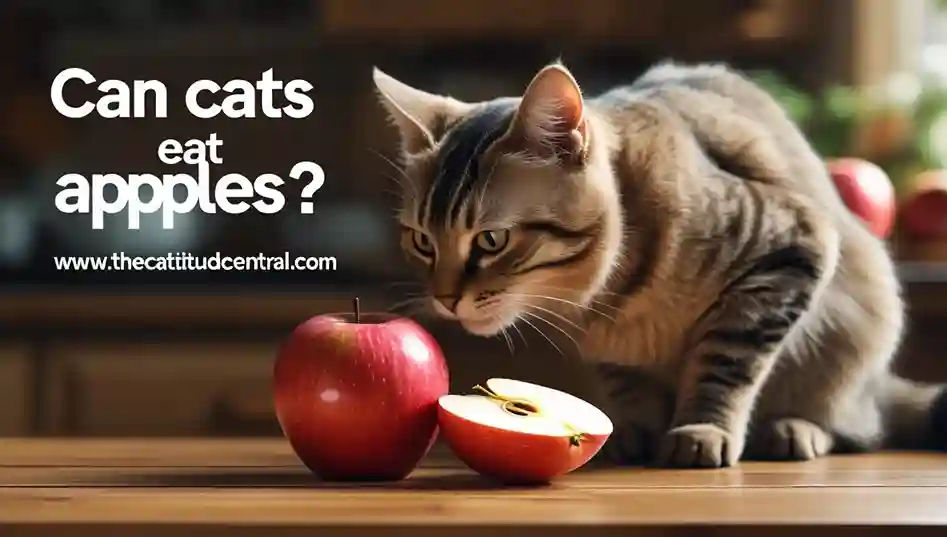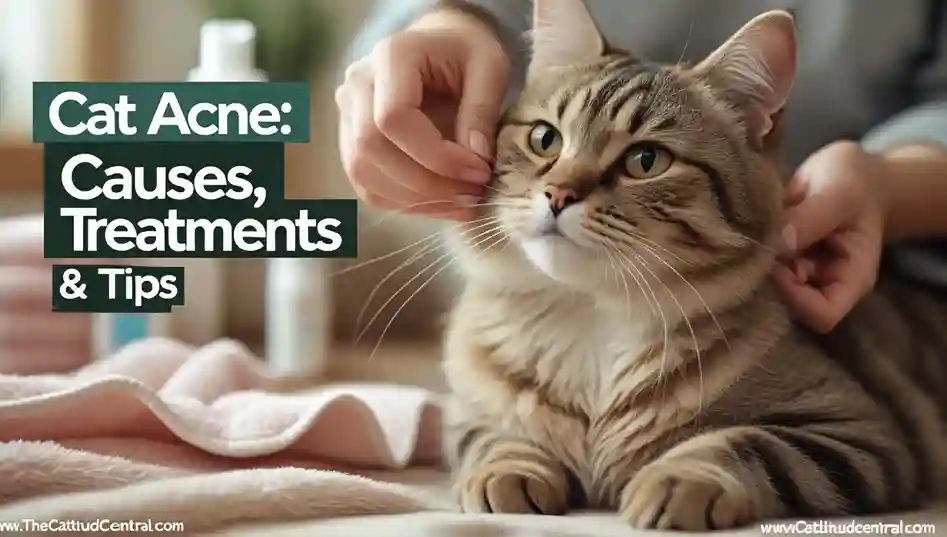Feeding your cat the right amount of food is one of the most critical aspects of ensuring their health, happiness, and longevity. Cats are unique creatures with specific nutritional needs that vary based on factors like age, weight, activity level, and health conditions. The question of how much to feed a cat is not one-size-fits-all, as overfeeding can lead to obesity, while underfeeding can cause nutritional deficiencies.
This comprehensive guide will walk you through everything you need to know about how much to feed a cat by weight, how much dry food to feed a cat per day, and how often should I feed my cat wet food. With practical tips, feeding charts, and product recommendations, you’ll be equipped to create a balanced diet tailored to your feline friend.
Factors Influencing How Much to Feed a Cat
Determining how much to feed a cat depends on several key factors. Understanding these will help you tailor your cat’s diet to their specific needs.
Age and Life Stage
Kittens, adult cats, and senior cats have vastly different nutritional requirements. Kittens need more calories to support rapid growth, while senior cats may require fewer calories due to reduced activity levels. For instance, a growing kitten might need 60-65 calories per pound of body weight, while an adult cat typically requires 20-30 calories per pound.
Weight and Body Condition
How much to feed a cat by weight is a critical consideration. A cat’s ideal body weight and body condition score (BCS) help determine their caloric needs. A BCS of 5 out of 9 is ideal, where the cat has a visible waistline and ribs that can be felt with slight fat covering. Overweight cats need fewer calories, while underweight cats may require more to reach a healthy weight.
Activity Level
Active cats, such as those who roam outdoors or engage in frequent play, burn more calories and may need more food. Conversely, indoor cats with a sedentary lifestyle require fewer calories to avoid weight gain. For example, an active 10-pound cat might need 300 kcal/day, while a less active one may only need 200 kcal/day.
Reproductive Status
Spayed or neutered cats often have lower metabolic rates, reducing their calorie needs by about 20-25%. Pregnant or nursing cats, however, require significantly more calories—sometimes 2-3 times their normal intake—to support their kittens.
Health Conditions
Certain health conditions, like diabetes or kidney disease, may require specialized diets. Always consult your veterinarian to adjust how much to feed a cat if they have specific medical needs.
How Much to Feed a Cat by Weight: Feeding Charts
To answer how much to feed a cat by weight, you can use feeding charts as a starting point. These charts provide general guidelines based on a cat’s weight, activity level, and reproductive status. Below is a sample feeding chart for adult cats:
| Cat Weight | Spayed/Neutered (kcal/day) | Intact (kcal/day) | Prone to Obesity (kcal/day) | Needs Weight Loss (kcal/day) |
| 5 lbs | 157 | 183 | 131 | 105 |
| 8 lbs | 200 | 280 | 160 | 120 |
| 10 lbs | 260 | 303 | 216 | 173 |
| 12 lbs | 300 | 420 | 240 | 180 |
| 15 lbs | 354 | 413 | 295 | 236 |
Source: Adapted from Chewy.com
To use this chart, determine your cat’s weight and condition, then check the caloric content on your cat food’s label (usually listed as kcal/cup for dry food or kcal/can for wet food). Divide the required daily calories by the food’s caloric content to calculate the portion size. For example, a 10-pound spayed cat needing 260 kcal/day eating dry food with 500 kcal/cup would require about ½ cup per day.
How Much Dry Food to Feed a Cat Per Day
Dry food is a popular choice for many cat owners due to its convenience and affordability. However, how much dry food to feed a cat per day depends on the caloric density of the food and your cat’s needs. Dry food typically contains 3,500-4,500 kcal/kg, making it more calorie-dense than wet food.
Calculating Dry Food Portions
To determine how much dry food to feed a cat per day, follow these steps:
- Weigh Your Cat: Use a digital scale for accuracy. If you don’t have one, the Amazon Basics Digital Kitchen Scale is an affordable option to weigh both your cat and their food precisely. View on Amazon.
- Check Caloric Content: Look at the food label for kcal/cup. For example, Hill’s Science Diet Adult Chicken Recipe Dry Cat Food contains about 500 kcal/cup.
- Calculate Portion: Divide your cat’s daily caloric needs by the kcal/cup. For a 10-pound cat needing 260 kcal/day, you’d feed about ½ cup of this food daily.
Sample Dry Food Feeding Chart
| Cat Weight | Dry Food (Cups/Day) | Approx. Grams/Day |
| 2-3 kg | 1/4 cup | 30-40g |
| 3-4 kg | 1/3 cup | 40-50g |
| 4-5 kg | 1/2 cup | 60-80g |
| 5-6 kg | 3/4 cup | 80-100g |
Source: Adapted from OurPetTails.com
Tips for Feeding Dry Food
- Measure Accurately: Use a measuring cup or scale to avoid overfeeding, as free-feeding dry food can lead to obesity.
- Provide Enrichment: Use puzzle feeders like the Catit Senses 2.0 Food Tree to make mealtime engaging and mimic hunting behavior. View on Amazon.
- Monitor Weight: Regularly check your cat’s weight and adjust portions if they gain or lose weight unexpectedly.
How Often Should I Feed My Cat Wet Food?
Wet food is an excellent choice for cats due to its high moisture content (about 70-80%), which supports hydration and is beneficial for conditions like kidney disease or urinary tract issues. But how often should I feed my cat wet food? The answer depends on your cat’s age, preferences, and dietary needs.
Feeding Frequency by Life Stage
- Kittens (0-6 months): Feed 4-6 small meals daily to support growth. A mix of wet food and kitten milk replacer is ideal for younger kittens.
- Kittens (6-12 months): Reduce to 3-4 meals per day as they transition to solid food.
- Adult Cats (1-7 years): 2-3 meals per day are sufficient, with wet food often served in the morning and evening.
- Senior Cats (7+ years): 2 meals per day, with smaller portions to aid digestion. Consult a vet for specialized diets.
Wet Food Portion Sizes
Wet food typically ranges from 750-1,200 kcal/kg, with a 3-oz can averaging 70-78 kcal. For a 10-pound adult cat needing 260 kcal/day, you’d feed about 3.5 cans of wet food (e.g., Purina Pro Plan Complete Essentials, 73 kcal/can). Split this into two meals of approximately 1.75 cans each.
Benefits of Wet Food
- Hydration: Wet food’s high water content helps cats with low thirst drive stay hydrated, reducing the risk of urinary issues.
- Weight Control: Wet food is less calorie-dense than dry food, making it easier to manage portions for overweight cats.
- Palatability: Many cats prefer wet food’s texture and flavor, encouraging consistent eating.
Recommended Wet Food Product
Consider Royal Canin Feline Health Nutrition Wet Food for a balanced diet with high moisture content. It’s formulated for adult cats and supports urinary health. View on Amazon.
Combining Wet and Dry Food
Many cat owners opt for a mixed diet of wet and dry food to balance convenience, nutrition, and hydration. To calculate portions for a mixed diet:
- Determine total daily calories (e.g., 260 kcal for a 10-pound cat).
- Decide the proportion (e.g., 50% wet, 50% dry).
- Calculate portions: If wet food provides 125 kcal (e.g., 1.7 cans at 73 kcal/can), dry food should provide the remaining 135 kcal (e.g., 0.27 cups at 500 kcal/cup).
For convenience, use an automatic feeder like the Cat Mate C500 Automatic Pet Feeder to dispense precise portions of wet or dry food at set times, keeping meals fresh with ice packs. View on Amazon.
Monitoring and Adjusting Your Cat’s Diet
Regularly monitoring your cat’s weight and body condition is crucial to ensure you’re feeding the right amount. Here’s how to stay on track:
- Weigh Your Cat: Use a digital scale every 2-4 weeks to monitor weight trends.
- Body Condition Score (BCS): Aim for a BCS of 5, where the waist is visible, and ribs are palpable with slight fat covering.
- Adjust Portions: If your cat gains weight, reduce calories by 10-15%. If they lose weight unintentionally, increase calories and consult a vet.
- Track Feeding: Keep a notebook to record daily food intake, noting the number of cans or grams of dry food.
FAQs About How Much to Feed a Cat
How much should I feed my cat by age?
Kittens (0-6 months) need 4-6 meals daily, with 60-65 calories per pound. Adult cats (1-7 years) require 2-3 meals with 20-30 calories per pound. Senior cats (7+ years) need 2 meals with adjusted calories based on health.
What is a good feeding schedule for a cat?
Adult cats thrive on 2-3 meals daily, with wet food in the morning and evening and dry food available during the day via a puzzle feeder. Kittens need more frequent meals, while seniors may benefit from smaller, more frequent portions.
How much should a 7kg cat eat?
A 7kg (15.4 lbs) spayed/neutered cat needs about 354 kcal/day, equating to 80-100g of dry food or 1.5-2 cans of wet food, split into 2-3 meals. Adjust based on activity level and BCS.
Is one can of wet food enough for a cat?
One 6-oz can of wet food (approximately 150 kcal) may suffice for a small cat (5-7 lbs), but most adult cats need 1.5-2 cans daily, split into multiple meals, to meet their caloric needs.
How can I prevent my cat from overeating?
Use measured portions, avoid free-feeding dry food, and incorporate puzzle feeders to slow eating. Regular weigh-ins and vet checkups help monitor weight and adjust how much to feed a cat.
Conclusion
Figuring out how much to feed a cat involves balancing their caloric needs with their unique characteristics, such as weight, age, and activity level. By using feeding charts, measuring portions accurately, and incorporating both wet and dry food, you can ensure your cat maintains a healthy weight and thrives. Products like the Amazon Basics Digital Kitchen Scale and Cat Mate C500 Automatic Pet Feeder can simplify the process, while high-quality foods like Royal Canin Feline Health Nutrition support optimal health.
Regularly monitor your cat’s weight and consult your veterinarian to fine-tune their diet. With this guide, you’re well-equipped to answer how much to feed a cat by weight, how much dry food to feed a cat per day, and how often should I feed my cat wet food, keeping your feline friend happy and healthy for years to come.
Sources:
Disclaimer: This blog post contains affiliate links, and as an Amazon Associate, I earn from qualifying purchases. This means I may receive a small commission at no additional cost to you if you purchase products through the links provided. All opinions and recommendations in this review are my own and product descriptions, customer feedback, and analysis of available information. Always check the latest reviews and product details before purchasing. Prices and product availability are subject to change, so please verify details on Amazon before purchasing. Always consult your veterinarian before making dietary changes for your cat. Thank you for supporting this blog!



